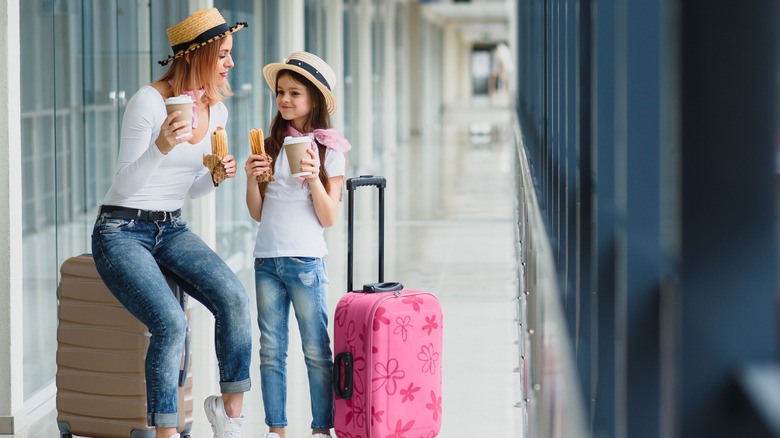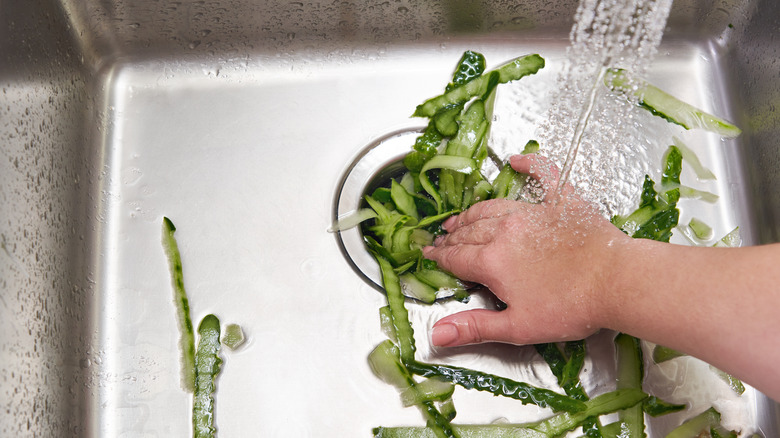This Is What Really Happens To Confiscated Airport Food
For those of us who take a plane every once in a while, it's inevitable you'll have food or drinks confiscated at the airport. Maybe you just have to dump out your water bottle. Maybe you have to hand over your jar of Reese's peanut butter that you got at the Hershey's store in NYC.
Yes, it might feel like a major inconvenience, but the airport staff isn't confiscating your snacks out of spite or to make you buy overpriced airport food. According to the Transportation Security Administration (TSA) website, food items like fruits and veggies are likely to be taken away "due to the risk of spreading invasive plant pests."
As for liquids, confiscations are mainly about safety. That 3-ounce rule? It's designed to prevent anyone from bringing aboard enough of an explosive liquid to cause serious damage, Mental Floss says. Yes, these precautions might seem annoying and excessive, but they exist for a reason. So what happens to the food that's been confiscated?
Where confiscated food goes
Contrary to popular belief, TSA agents do not get to take home those beautiful avocados they confiscate. Instead, foods taken away by airport officials are collected on carts and taken away to a back room, says Grub Street.
In a YouTube video posted by Great Big Story, one worker said they confiscate anywhere from 400 to 600 pounds of food each day. Chinese beef candy, Jamaican mangoes, Spanish cured meats, all taken away to the mysterious "grinder."
Business Insider compares the grinder to an industrial garbage disposal. After being inspected for insects and parasites, confiscated items are flushed down into a grinder to be destroyed. The resulting sludge goes off to the same place as your own garbage disposal's sludge.
The best way to avoid having your items confiscated is to check the TSA's website before you get to the airport. The website includes a comprehensive guide to what is and is not allowed to be carried through security checkpoints.

